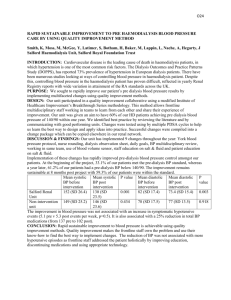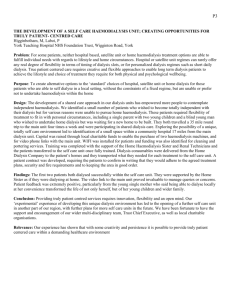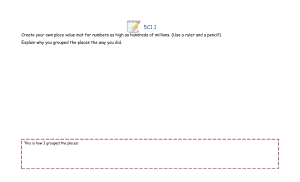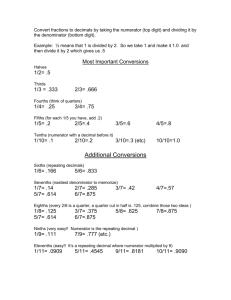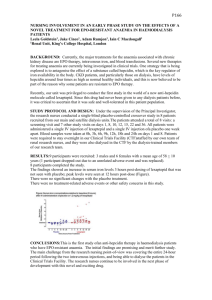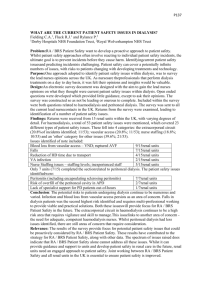Haemodialysis-associated Bloodstream Infection Indicators
advertisement
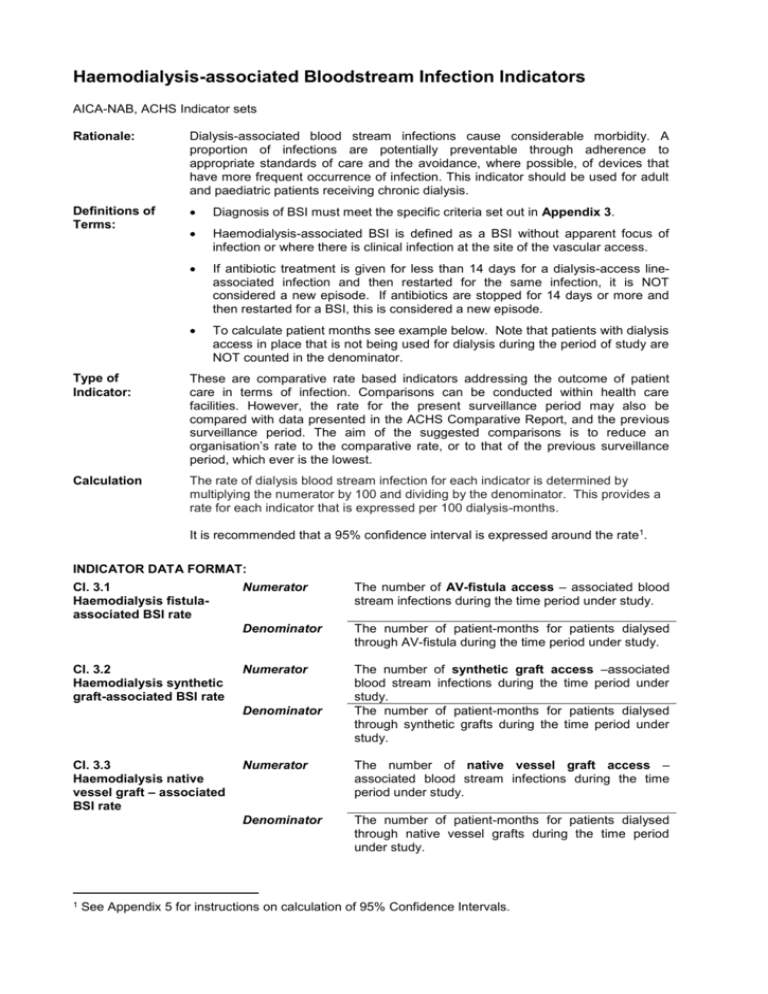
Haemodialysis-associated Bloodstream Infection Indicators AICA-NAB, ACHS Indicator sets Rationale: Dialysis-associated blood stream infections cause considerable morbidity. A proportion of infections are potentially preventable through adherence to appropriate standards of care and the avoidance, where possible, of devices that have more frequent occurrence of infection. This indicator should be used for adult and paediatric patients receiving chronic dialysis. Definitions of Terms: Diagnosis of BSI must meet the specific criteria set out in Appendix 3. Haemodialysis-associated BSI is defined as a BSI without apparent focus of infection or where there is clinical infection at the site of the vascular access. If antibiotic treatment is given for less than 14 days for a dialysis-access lineassociated infection and then restarted for the same infection, it is NOT considered a new episode. If antibiotics are stopped for 14 days or more and then restarted for a BSI, this is considered a new episode. To calculate patient months see example below. Note that patients with dialysis access in place that is not being used for dialysis during the period of study are NOT counted in the denominator. Type of Indicator: These are comparative rate based indicators addressing the outcome of patient care in terms of infection. Comparisons can be conducted within health care facilities. However, the rate for the present surveillance period may also be compared with data presented in the ACHS Comparative Report, and the previous surveillance period. The aim of the suggested comparisons is to reduce an organisation’s rate to the comparative rate, or to that of the previous surveillance period, which ever is the lowest. Calculation The rate of dialysis blood stream infection for each indicator is determined by multiplying the numerator by 100 and dividing by the denominator. This provides a rate for each indicator that is expressed per 100 dialysis-months. It is recommended that a 95% confidence interval is expressed around the rate1. INDICATOR DATA FORMAT: CI. 3.1 Haemodialysis fistulaassociated BSI rate CI. 3.2 Haemodialysis synthetic graft-associated BSI rate Numerator The number of AV-fistula access – associated blood stream infections during the time period under study. Denominator The number of patient-months for patients dialysed through AV-fistula during the time period under study. Numerator The number of synthetic graft access –associated blood stream infections during the time period under study. The number of patient-months for patients dialysed through synthetic grafts during the time period under study. Denominator CI. 3.3 Haemodialysis native vessel graft – associated BSI rate 1 Numerator The number of native vessel graft access – associated blood stream infections during the time period under study. Denominator The number of patient-months for patients dialysed through native vessel grafts during the time period under study. See Appendix 5 for instructions on calculation of 95% Confidence Intervals. CI. 3.4 Haemodialysis centrally inserted non-cuffed dialysis line (temporary) – associated BSI rate CI. 3.5 Numerator The number of centrally inserted non-cuffed line access-associated blood stream infections during the time period under study. Denominator The number of patient-months for patients dialysed through centrally inserted non-cuffed line during the time period under study. Numerator The number of centrally inserted cuffed line accessassociated blood stream infections during the time period under study. Denominator The number of patient-months for patients dialysed through centrally inserted cuffed line during the time period under study. Haemodialysis centrally inserted cuffed (semipermanent) dialysis line-associated BSI rate Calculating Patient-months The patient-month denominator is calculated by counting the number of patients being haemodialysed by each access method, each month and adding them together. For example, for if there were 45 patients dialysed via non-cuffed dialysis lines in January, 40 in February and 50 in March, the denominator for Indicator 3.4 would be (45+40+50=135) 135 dialysis patient months for the 3-month surveillance period. If a patient was on the Dialysis program for only 1 or 2 weeks, fractional calculations can be made and given values of 0.25 or 0.5. References Hospital Infections Program, Centres for Disease Control and Prevention, Atlanta Surveillance of Bloodstream and Vascular access Infections in Outpatient Haemodialysis Centres. October 1999. This indicator has been replicated with permission, from the ACHS Infection Control Indicators Version 2 ACHS (2004) ACHS Clinical indicator Users’ Manual 2004.
